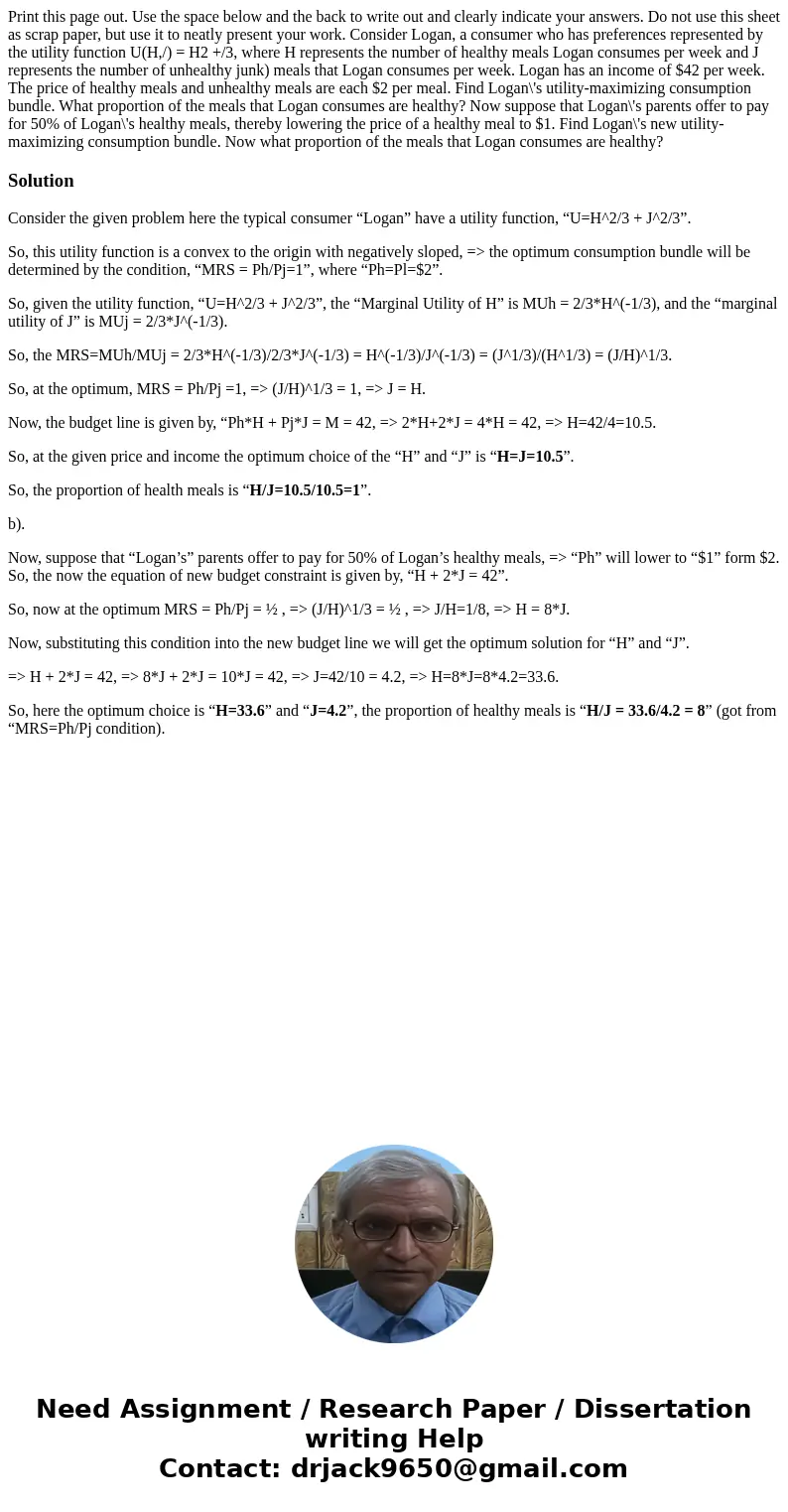Print this page out Use the space below and the back to writ
Solution
Consider the given problem here the typical consumer “Logan” have a utility function, “U=H^2/3 + J^2/3”.
So, this utility function is a convex to the origin with negatively sloped, => the optimum consumption bundle will be determined by the condition, “MRS = Ph/Pj=1”, where “Ph=Pl=$2”.
So, given the utility function, “U=H^2/3 + J^2/3”, the “Marginal Utility of H” is MUh = 2/3*H^(-1/3), and the “marginal utility of J” is MUj = 2/3*J^(-1/3).
So, the MRS=MUh/MUj = 2/3*H^(-1/3)/2/3*J^(-1/3) = H^(-1/3)/J^(-1/3) = (J^1/3)/(H^1/3) = (J/H)^1/3.
So, at the optimum, MRS = Ph/Pj =1, => (J/H)^1/3 = 1, => J = H.
Now, the budget line is given by, “Ph*H + Pj*J = M = 42, => 2*H+2*J = 4*H = 42, => H=42/4=10.5.
So, at the given price and income the optimum choice of the “H” and “J” is “H=J=10.5”.
So, the proportion of health meals is “H/J=10.5/10.5=1”.
b).
Now, suppose that “Logan’s” parents offer to pay for 50% of Logan’s healthy meals, => “Ph” will lower to “$1” form $2. So, the now the equation of new budget constraint is given by, “H + 2*J = 42”.
So, now at the optimum MRS = Ph/Pj = ½ , => (J/H)^1/3 = ½ , => J/H=1/8, => H = 8*J.
Now, substituting this condition into the new budget line we will get the optimum solution for “H” and “J”.
=> H + 2*J = 42, => 8*J + 2*J = 10*J = 42, => J=42/10 = 4.2, => H=8*J=8*4.2=33.6.
So, here the optimum choice is “H=33.6” and “J=4.2”, the proportion of healthy meals is “H/J = 33.6/4.2 = 8” (got from “MRS=Ph/Pj condition).

 Homework Sourse
Homework Sourse